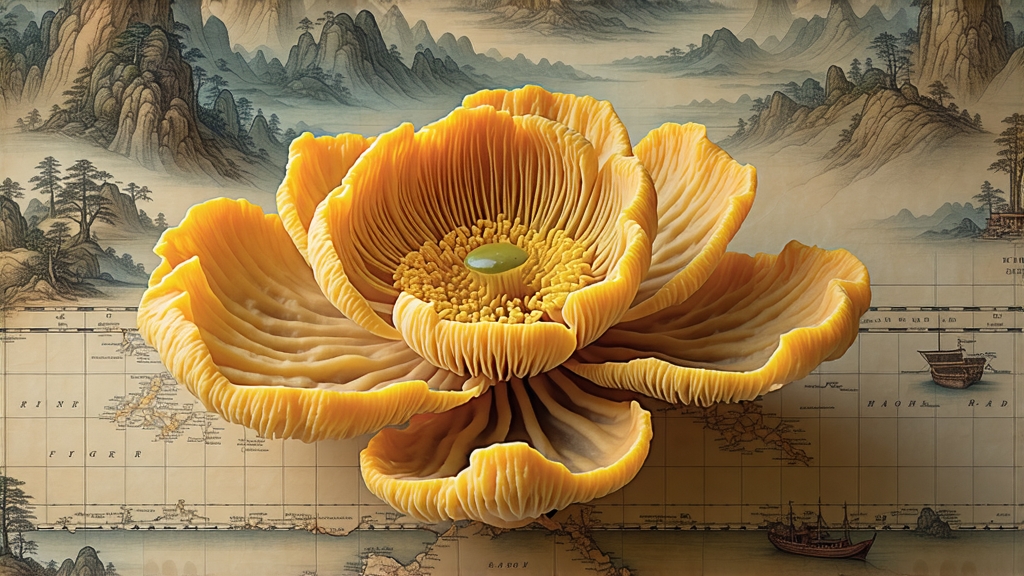
If you walk into any Tibetan nomad’s black yak-hair tent at 4 000 m on the Qinghai–Tibet plateau, the first thing offered is not barley wine but a bowl of steaming, blood-red tea with a faint yak-butter sheen. That tea is almost always Fu brick—compressed, velvet-dark, and freckled inside with tiny golden grains that look like pollen. To the nomads it is “vitamin tea,” the simplest guard against altitude sickness and lipid-heavy diets; to Chinese scholars it is the most microbiologically romantic member of the dark-tea family, a living relic of the 2 000-year-old Tea-Horse Road. This article invites the international reader to discover why Fu brick (Fú zhuān chá) is valued not merely as a beverage but as a travelling ecosystem that once greased the wheels of Eurasian trade.
-
From Horse Caravans to Communist Currency
The story begins in the 1368–1644 Ming dynasty, when the court needed war horses from the Tibetan plateau. Tea was the only commodity Tibetans would accept in barter. Compressed tea reduced weight and resisted mould on the month-long mule trek from Hunan and Shaanxi, so brick-shaped teas became legal tender. The town of Jingyang in Shaanxi specialized in bricks stamped with an official “Fu” (府) mark—short for government office—hence the name. By the Qing era a horse caravan could carry 20 000 bricks; one brick bought one horse. After 1949 the People’s Bank of China even used Fu bricks as hard currency in the western provinces, redeemable at any state tea company. Thus the tea literally financed revolutions and migrations along the Silk Road. -
Terroir: Two Provinces, Two Styles
Today “Fu brick” is a protected geographical indication with two recognised birthplaces:
- Shaanxi Jingyang “North Road Fu” – made with the hard spring water of the Jing River and sun-dried Maocha from Qin-ba mountain bushes. Bricks are looser, 2 kg, and pressed in antique wooden boxes lined with maize husks, giving a sweet popcorn note.
- Hunan Anhua “South Road Fu” – uses humid Yiyang air and large-leaf varietal “Yun Tai Da Ye.” Bricks are denser, 1 kg, and darker because of longer wet piling. The flavour is deeper, with camphor and dried jujube.
Both styles must contain the golden-yellow fungus Eurotium cristatum (called “golden flowers” or Jin Hua), but the Hunan version carries roughly twice the colony density, visible to the naked eye as a starry night inside the brick.
- Craft: When Tea Lets Mold In
Fu brick is the only tea that invites a beneficial mould to eat it alive. The choreography looks like this:
a. Base tea: early summer large leaves are pan-fired, sun-dried, and piled into 1-ton heaps for initial wet piling (12 h at 70 °C). This creates the familiar “earthy” base of all dark teas.
b. Secondary inoculation: the semi-fermented Maocha is steamed at 100 °C for 8 s, then wheeled into a 30 °C “flower room” whose walls are painted with last year’s spores. Over 6 days the tea is kept at 28 °C and 75 % RH while Eurotium blooms; technicians turn the piles every 12 h to oxygenate the fungus.
c. Compression: the colonised tea is weighed into linen moulds and pressed at 25 bar for 20 min—just long enough to knit the leaves without crushing the fungal network.
d. Golden curing: bricks rest in ventilated racks for 15 days while the flowers sporulate, turning from white pin-dots to golden cups 0.3–0.5 mm across. Finally the bricks are baked at 45 °C for 3 h to arrest growth, locking in a chestnut aroma.
A finished brick contains ~1 million CFU of Eurotium per gram, the same mould used in Japanese koji, but here it works on tea polyphenols rather than rice. The metabolic by-products include the unique molecule “cis-2-decenoic γ-lactone,” which tastes like honey-dew and lowers blood triglycerides—one